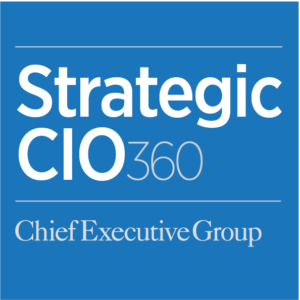“Covid-19 will reshape our world. We don’t know when the crisis will end. But we can be sure by the time it does, our world will look very different.”
These are the words of Josep Borrell Fontelles, High Representative of the Union for Foreign Affairs and Security Policy in May 2020.
Since he uttered this prophetic statement, companies have closed, economies have shut down and industries have shuttered. At the same time, millions of workers shifted to online environments and worked from home. The changes were radical, profound and enduring— taking a professional and personal toll. The trauma triggered gloom not only on employees, but on the managers who lead them. The pandemic’s isolating impact even spawned a health condition: Pandemic Cave Syndrome.
Now, with the warnings of an impending recession, many leaders face increasing pressure to go further: protect the bottom line at all costs including their mental health. According to a recent report from management consulting firm Deloitte, more than three-quarters of C-Suite executives surveyed (76%) said the pandemic has negatively affected their well-being. In an era of stress and burnout, senior-level executives all the way up to the CEO are looking for ways to recharge and re-engage.
The graduate business program at Pepperdine is a proving ground for insights and ideas about the opportunities and challenges facing companies and the executives who lead them. Especially for executives entering the autumn season of their career, regaining enthusiasm can be particularly rewarding but also challenging. Observations and interactions with executive-students can help senior leaders rethink their skills and selves. Here are four ways:
1. Use the opportunity finderscope.
On a telescope, the finderscope is the small scope that identifies a general area in celestial space to view. Senior level executives should spend much more time peering through the finderscope than the telescope. That means scanning the horizon looking for broad opportunities. In the pandemic, many executives had to focus on specific problems that were narrow in nature (e.g., technology enabling employees to work from home). They became defensive protecting the core business to survive. Changing views is difficult. Senior managers in Pepperdine Graziadio’s Presidents and Key Executives and EMBA program intentionally learn how to adjust the broad view—setting aside time to think, engage in peer and faculty discussion, competitive analysis, brainstorming and goal setting towards capitalizing on new emerging opportunities. Senior executives should seek to engage in such collaboration and discussion.
2. Establish a safe place to invent.
Invention is one of leaders’ most valuable resources. Invention focuses on new products and services, management approaches and tools to enhance performance. To invent, senior-level executives need the mental room to consider how to identify and acquire what is essential. Senior executives who foster a non-threatening working environment that encourages respect for everyone are more likely to produce and inspire breakthrough inventions and results.
3. Get help from credible, dependable partners.
Until recently, many senior executives set the corporate tone based on their own thoughts and experiences. However, technology, policy and politics, global conflicts, activism and other forces are driving social change. Considering these accelerating shifts, many companies need to rethink their own organizational visions, values and strategies. And to be effective, they need expansive views of emerging opportunities and possibilities. Senior managers should have a network of non-company colleagues and advisors who they can trust for high-level counsel. These include credible and dependable experts such as past board members, peers, seasoned faculty advisors and retired executives.
4. Seek togetherness.
A 2017 National Bureau of Economic Research survey found CEOs spend up to one-quarter of their day alone—a number that almost certainly went up during the pandemic. Hyperconnectivity, the ability of unified and broadened communications bandwidth supply to exceed demand, allows individuals to communicate in a nearly unlimited capacity. However, as Sherry Turkle elaborates on in her popular Ted Talk, “Connected, but Alone?” people increasingly expect more from technology and expect less from each other. Setting aside technology to spend time together, in-person, establishes trust as well as emotional support and empathy. People, top leaders included, need to work near other people and socialize for extended periods in order to learn anew and enjoy the benefits of new discoveries.
In the future, the global economy is sure to produce more chaos. The current state of war, global public health risks, political instability and radicalized movements create conditions that will produce other global disruptions. Leaders who expect the world to revert to the way it was before the pandemic will be disappointed. However, in this era of chaos and change, there are the remarkable opportunity to develop robust strategies that positively influence outlooks.
For senior-level executives that means building future-forward strategies, doing the job implementing them, and making well-being a greater priority. Senior-level leaders who seek quality, safety and a sense of purpose will inspire the same in others. Absolutely positive and collegial workplace relationships generating requisite knowledge for success in the evolving, emerging world would be a great future understatement.









